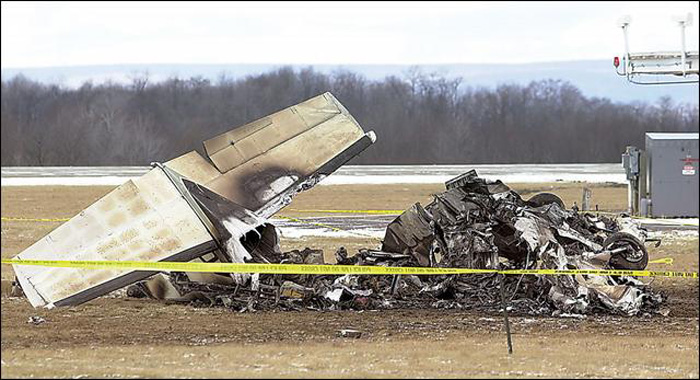Crash of a Cessna 414 Chancellor in Johnstown: 2 killed
Date & Time:
Dec 26, 2006 at 1555 LT
Registration:
N400CS
Survivors:
No
Schedule:
Morgantown - Teterboro
MSN:
414-0613
Crew on board:
2
Crew fatalities:
Pax on board:
0
Pax fatalities:
Other fatalities:
Total fatalities:
2
Aircraft flight hours:
5904
Circumstances:
The airplane encountered in-flight icing, and the pilot diverted to an airport to attempt to knock the ice off at a lower altitude. During the instrument approach, the pilot advised the tower controller of the ice, and that it depended on whether or not the ice came off the airplane if she would land. As the airplane broke out of the clouds, it appeared to tower personnel to be executing a missed approach; however, it suddenly "dove" for the runway. The tower supervisor noticed that the landing gear were not down, and at 75 to 100 feet above the runway, advised the pilot to go around. The airplane continued to descend, and by the time it impacted the runway, the landing gear were only partially extended, and the propellers and airframe impacted the pavement. The pilot then attempted to abort the landing. The damaged airplane became airborne, climbed to the right, stalled, and nosed straight down into the ground.
Probable cause:
The pilot's improper decision to abort the landing with a damaged airplane. Contributing to the accident were the damage from the airplane's impact with the runway, the pilot's failure to lower the landing gear prior to the landing attempt, and the in-flight icing conditions.
Final Report:





